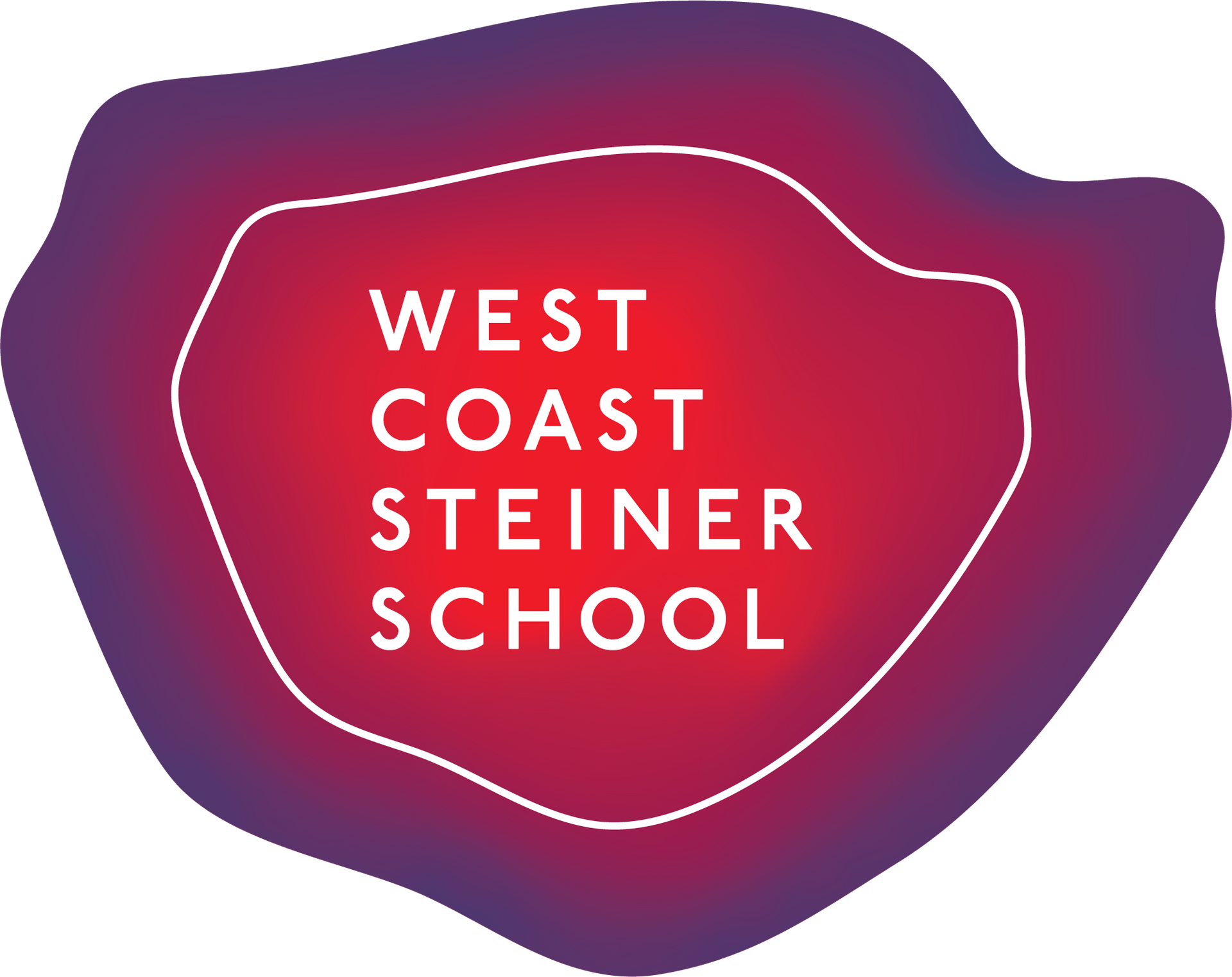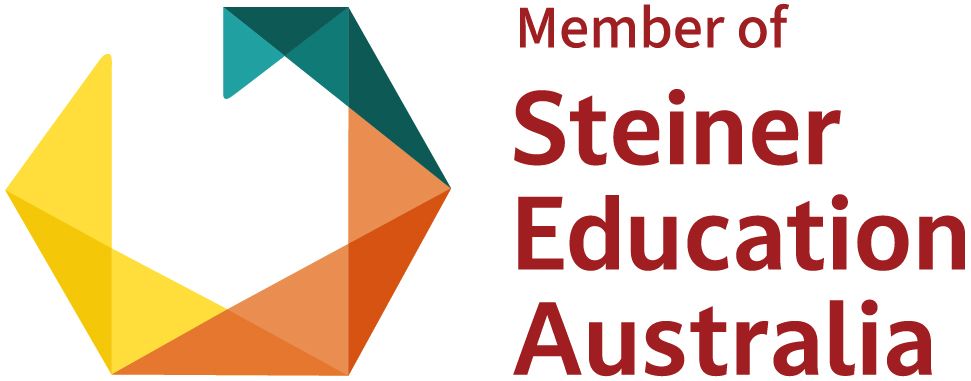ABN: 55 173 177 370
Will-developed Intelligence: Knitting Begets Thinking!
By Marijke McCartney, Handwork Teacher
In 1920 Rudolf Steiner said:
"The more we take into account that intellect develops from the movement of the limbs, from dexterity and skills, the better it will be."
This motto stands behind the whole Waldorf curriculum and especially the Handwork and Craft curriculum. Learning through doing and learning through making are fundamental principles of Waldorf Education.
Out of activity and movement arise thinking and understanding: creative, living thinking is movement internalised.
When we think of movement, we think primarily about the activity of the limbs. The limbs are the instruments of the Will. The Will is the power within us that allows us, through our deeds, to interact with the world. Will activity lays the foundation for our thinking. The brain has
billions of active neural passageways which, when correctly exercised, allow us to make connections and patterns.
Intelligence is formed through movement, activity and manual dexterity. Mental operations bring about real thoughts when prepared by physical action, which is Will activity.
Throughout the whole of Waldorf Education, movement is promoted by means of imaginative play and teaching, speech work, singing and music, modelling, eurythmy, games, handwork and crafts.
Doing is an integral part of every Main Lesson.
We will focus in this article on Handwork and Crafts and on the importance of manual dexterity in the development of intelligence. Recent research has indicated that the use of the hands has laid the foundation of the development of the brain. The size of the brain of our ape ancestors increased according to the increase in tool use.
Walking upright frees the hands from simply supporting the weight. This allows for the development of new skills. The structure of modern man is the result of the changes that came with a tool-using way of life. Human structure, especially uprightness and the changes
in the structure of the hands, and in particular the thumb, makes human behaviour distinctive. Having enough brainpower to know, or guess, what the brain itself was doing, marked a transition to consciousness which is often identified as a special characteristic of Homo Sapiens.
New experiences and new environments became available through the freeing of the hands and the adaptation of the wrist and fingers.
Through hand signals, bodily gestures, vocalization and cooperative tool manufacture and use, conditions were created for the
development of language. Survival prospects were also greatly increased.
Increasing refinement and specialisation of the manipulative skills brought about complex social structures, cooperation and competition within the human sphere. These brought forward the evolution of the human brain. We may conclude that intelligent, purposeful use of
the hand is an elemental force in the birth of the mind.
Professor Bergstrom, a neurophysiologist from Sweden, talks about "finger blindness" which can occur when we don’t use our fingers
The very rich network of nerve endings in our fingertips is connected with neural passages in the brain. If these nerve endings are not activated by the work of the hands, the individual’s all-round development is thwarted.
If we neglect to develop and train our children’s fingers and the creative form-building capacity of their hand muscles, then we neglect to develop their understanding of the unity of all things.
How does education accommodate the fact that the hand is not merely an icon of humanness, but often the real life focus, the lever or launching pad of a successful and genuinely fulfilling life?
Why did Rudolf Steiner insist that each child should learn to knit, both boys and girls? This was quite a revolutionary idea at the time.
He said if we do knitting with the children, we are working on their minds. Capacities are built up for logical thinking, forming judgements and solving problems. In knitting we are following a thread. One stitch in a row affects the one before and after, just as each step in a logical
argument. We can discover faults in our knitting and thinking by unravelling these steps or stitches. When we are knitting we are making patterns, which corresponds with making patterns in our brain. When we repeat the movements, the connections become stronger, we
become skilful. Our thinking is in our fingertips.
Activating the will in Handwork strengthens will activity in all subjects.
Learning one thing makes it easier to learn another. If we make patterns, seeing, recognizing and using patterns becomes easier for us. Confidence in one subject carries over into another.
For healthy human will, we need movement, flexibility and fluidity in all the three soul forces: the thinking, the feeling and the willing. Through the activation of the imagination, the senses and the limbs, a harmonious development can be achieved.
The natural world is experienced through the senses, which are connected to the vital processes of life, such as breathing, digestion, growing, and reproduction. If a child is deprived of sense experiences, it can hinder their development and personality. Handwork and Craft expand the potential for a rich sensory experience. Working with different natural materials such as wool, cotton, wood, clay and the elements of earth, water, fire and air in the different craft processes, the child is connected to the world, and can perform purposeful
deeds.
The basis for a rich, feeling life is provided, which is a necessary mediator between the forces of the head and those of the limbs. A healthy mental activity is connected to the feelings of the heart. Too much mental activity can result in cold, cruel thinking, or
selfishness. We need to bring enthusiasm, interest and warmth of feeling into our thinking.
Judgment is required for healthy limb activity. We need to bring purpose into our physical work. An imbalance will result in too much feeling, anger, and depression. The interest and attention enlivens the activity of the breast system, the lungs and the blood. It is this activity
that keeps the brain functioning. It is the activity that keeps matter alive.
Today we can observe a lack of balance in the stimulation of the senses; either through an over stimulation, or a deprivation. This, together with a lack of movement, calls for a more practical, hands-on education.
The activities that for centuries provided children with
stimulation for healthy movement and sense experience are disappearing. The child no longer participates in activities like cooking, making bread, scrubbing, chopping wood, and digging
the soil. We need to restore the children’s connection to the natural world and provide opportunities for healthy purposeful movement.
This therapeutic work starts in the Kindergarten where imaginative play is encouraged and household tasks are performed and imitated.
This will activity in the Kindergarten progresses through the school years from play into meaningful work through craft and technology.
Learning through doing ascends from the limbs to the head. Reflection and analysis of what the hands have made bring consciousness into the intelligence of the limbs. Between the limbs and the head the choice of materials, colour and texture provide rich nourishment for
the feeling life. The artistic experience transforms those feelings into a basis for aesthetics and sound judgement. There is a rhythmic process of exchange taking place.
When the child learns to make beautiful, useful things, a social awareness will arise and appreciation for the work of others, as well as knowledge and respect for the source of the materials, the natural environment, tools, resourcefulness, and recycling principles.
It is important not to waste materials. Craft activities need to be experienced within a context related to the rest of life.
Each story is carefully crafted for the students, bringing elements of moral teachings and ‘real life’ experiences the children can relate to.
Intelligence arises through movement, activity and manual dexterity. It is not directed to finished thinking. It understands what is in movement or still in a state of becoming. It does not arise from the intellect alone, but from the working together of the faculties of thinking,
feeling and doing The intellect itself is primarily concerned with reasoning and the acquisition of knowledge. It focuses on grasping facts, that which already exists or is known.
Intelligence is concerned with making patterns, understanding patterns and opening up new patterns.
Here the foundations are laid for forming judgements. Mental operations such as reaching conclusions, forming judgements and comprehension are the result of taking actions into the mind and coordinating them there; picking up and following a thread. When prepared by physical action - by an activity of the will, mental operations bring about real thought.
In the creative process of making, the child engages with the material world. In so doing s/he develops an interest in it, develops skills, self confidence, a sense of purpose, a sense of achievement, a sense of belonging, an understanding of the needs of the world and a wish to actively participate.
In addition the senses are developed.
The renewal of education and of social, economic and spiritual life as Steiner suggests, depends on the ability of the coming generations to bring about something new and constructive out of their own inner resources; something that was not there before. They can do that if they learn to understand what is good, beautiful and truthful, - which are spiritual qualities at the heart of Waldorf Education.
Flexibility and adaptability are necessary attributes for the future when our children will most likely have not one, but many careers. In our often insecure world, a strong, well-directed will is of great importance.
They will need to design a world of work that supports human
development: work that enables the individual to unfold and reach his highest potential; work which serves the needs of humanity and the natural world in a selfless way; work that serves the resolution of conflict and solves the world’s problems.
References and further reading
Study of Man by Rudolf Steiner
Will-Developed Intelligence by D. Mitchell and P. Livingston
The Hand by F. Wilson

